24 Hours Hotline: +86 137-3541-1378
Email:shanghai@tripstoshanghai.com
24 Hours Hotline: +86 137-3541-1378
Email:shanghai@tripstoshanghai.com
Why Visit Qibao Shanghai?
Qibao Ancient Town emerges as a rare treasure where time-honored traditions and modern convenience weave together seamlessly, making it an indispensable stop for travelers eager to uncover Shanghai’s historical roots without venturing far from the city’s dynamic core. While Shanghai dazzles with its skyscrapers piercing the sky, neon-lit commercial avenues, and cutting-edge infrastructure that defines a global metropolis, Qibao stands as a serene counterpoint—preserving the essence of old Jiangnan (the region south of the Yangtze River) with its winding canals, stone bridges, and age-old customs.
The core appeal of Qibao Ancient Town lies in its three defining strengths. First, it boasts a history spanning over a millennium, with layers of stories etched in its temples, streets, and waterways. Second, its culinary scene is a paradise of authentic Shanghai snacks, where every stall and shop offers a taste of local heritage. Third, its unbeatable accessibility—being directly reachable by metro—eliminates the hassle of long commutes, making it perfect for travelers short on time or seeking a balanced blend of cultural immersion and urban ease. For anyone looking to experience the heart of Shanghai beyond its modern facade, qibao shanghai is the ideal destination.
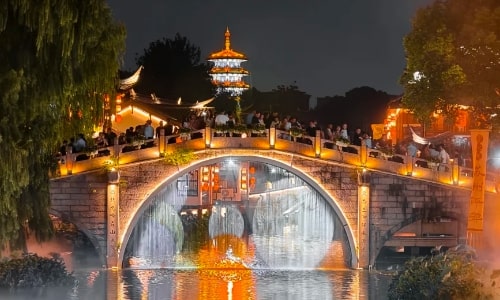
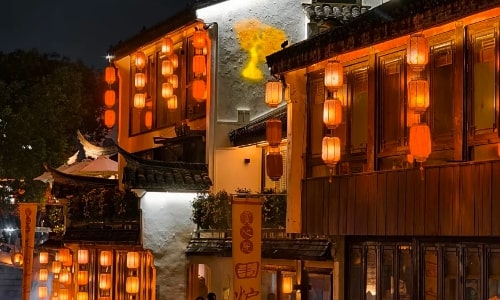
The Story Behind Qibao Ancient Town
Exploring Qibao Ancient Town history reveals a rich and vibrant narrative of Chinese heritage, shaped by centuries of settlement, trade, and cultural exchange that have left indelible marks on its landscape and people.
1. Origins and History
Qibao Ancient Town, founded during the Song Dynasty (960-1279), began as a small riverside village, capitalizing on its strategic location on a tributary of the Grand Canal. With the booming trade of the Ming and Qing dynasties, Qibao Ancient Town gradually developed into a bustling commercial center, attracting merchants from across the country to trade silk, rice, and handicrafts. This influx of goods and people fostered a diverse cultural landscape, laying the foundation for Qibao Ancient Town's enduring prosperity and unique identity. Even today, the well-preserved shophouses and markets lining its streets bear witness to its mercantile past.
2. Name Origin
The name “Qibao,” which translates to “Seven Treasures,” derives from enduring local legends that have been passed down through generations. According to folklore, the town was once safeguarded by seven precious artifacts: a luminous jade axe said to have been forged by celestial beings, a divine banyan tree that granted wishes to the pious, a golden rooster that crowed to warn of danger, a bronze bell whose chime calmed storms, a sacred Buddhist scripture that brought wisdom, a glowing pearl that lit the night, and a pair of stone lions that guarded the town’s entrances. These treasures were believed to protect the town and its inhabitants from harm, and their legacy lives on in the town’s name and local folklore.
3. Cultural Heritage
Qibao Ancient Town is a living repository of Jiangnan culture, where traditions are not just preserved but actively practiced:
Buddhist Influence: Qibao Temple, founded in 946 AD during the Northern Song Dynasty, has been a spiritual anchor for millennia. Though reconstructed multiple times over the centuries due to wars and natural disasters, it retains its classic Buddhist architectural style and continues to draw pilgrims and worshippers. The temple’s annual festivals, such as the Buddha’s Birthday, are major community events that blend religious rituals with local customs.
Water Town Traditions: The town’s layout—centered around a winding canal with over a dozen stone bridges—reflects the iconic “water town” lifestyle of southern China. For centuries, the canal served as the town’s lifeline, used for transportation, fishing, and daily chores like washing. Today, while motorized transport has replaced canal boats for most purposes, the waterways remain a central part of the town’s charm, with wooden boats still ferrying visitors for leisurely rides.
Arts & Crafts: Traditional handicrafts thrive in Qibao, with artisans passing down skills from generation to generation. Wood carvers create intricate sculptures of gods and animals, silk weavers produce delicate embroidery featuring floral and scenic motifs, and sugar painters craft edible art using melted sugar. Many of these artisans work in small workshops along the old street, allowing visitors to watch them practice their crafts.
Local Opera: Traditional folk operas, such as Huai Opera and Shanghai Opera, and storytelling performances were once the primary form of entertainment in Qibao. While their popularity has waned with the rise of modern media, local troupes still stage performances on weekends and holidays, accompanied by traditional instruments like the erhu (a two-stringed fiddle) and pipa (a lute-like instrument), offering a glimpse into the town’s cultural past.
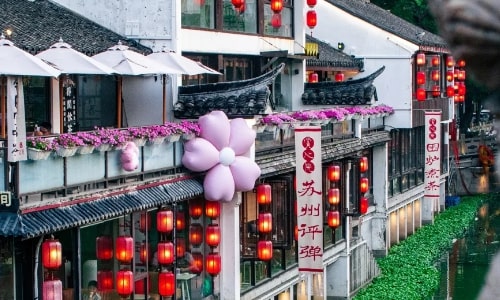
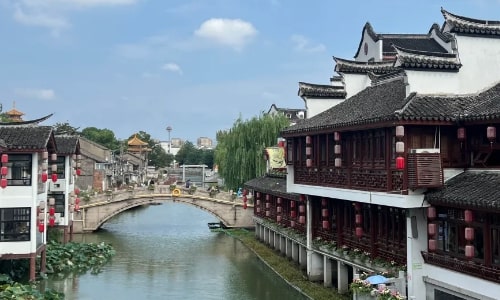
Main Attractions in Qibao Ancient Town
Qibao Ancient Town offers a multi-layered experience that combines “seeing, doing, and experiencing,” blending visual beauty, interactive fun, and deep cultural immersion.
1. Qibao Old Street
As the beating heart of Qibao Ancient Town, Qibao Old Street is where the town’s history and daily life converge most vividly. Comprising two main arteries—South Street and North Street—this pedestrian-only lane stretches for approximately 500 meters along the Qibao River, lined with red lanterns that glow warmly at dusk and traditional shophouses with sloped tile roofs and wooden facades.
The street is a treasure trove of discoveries:
Time-Honored Shops: Among the bustling stalls, you’ll find century-old establishments like “Lao Zhang’s Tea House,” which has served fragrant jasmine and Longjing tea since the late Qing Dynasty, and “Chen’s Rice Cake Shop,” where generations of the Chen family have steamed glutinous rice cakes using a recipe unchanged for 150 years. These shops retain their original decor, with wooden counters, vintage signs, and shelves stacked with traditional goods.
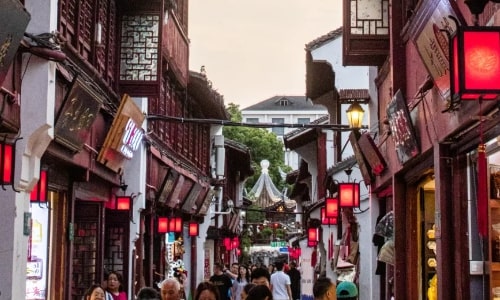
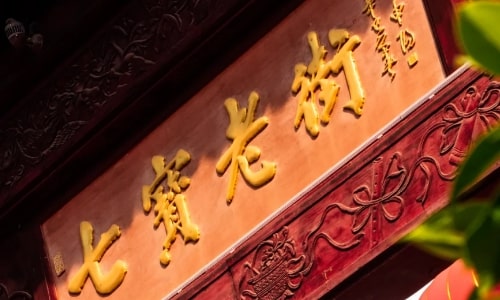
Folk Museums: Tucked between the shops are small, intimate exhibitions that showcase Qibao’s history. The Qibao Folk Culture Museum, housed in a restored Ming Dynasty building, displays ancient farming tools, traditional wedding costumes, and relics from the town’s merchant era, such as old account books and porcelain vases. The Shadow Play Museum, meanwhile, features a collection of leather puppets dating back to the Qing Dynasty, along with displays explaining the art form’s origins.
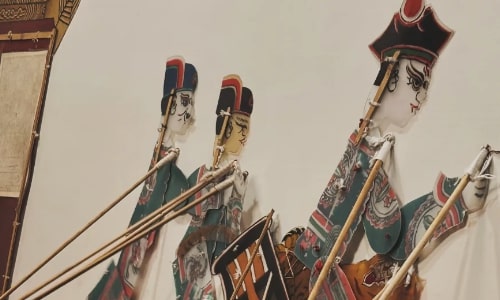
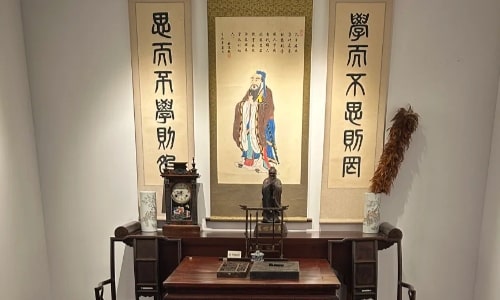
Atmosphere: The street buzzes with life—vendors call out to passersby in Shanghai dialect, the aroma of fried crab shell pastries and stinky tofu wafts through the air, and the gentle lapping of canal water mixes with the chatter of locals and visitors. It’s a place where you can pause to watch a sugar painter at work, listen to an elderly storyteller, or simply soak in the timeless ambiance.
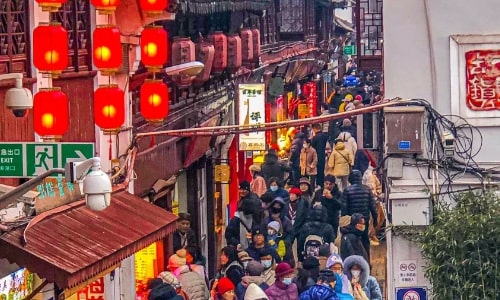
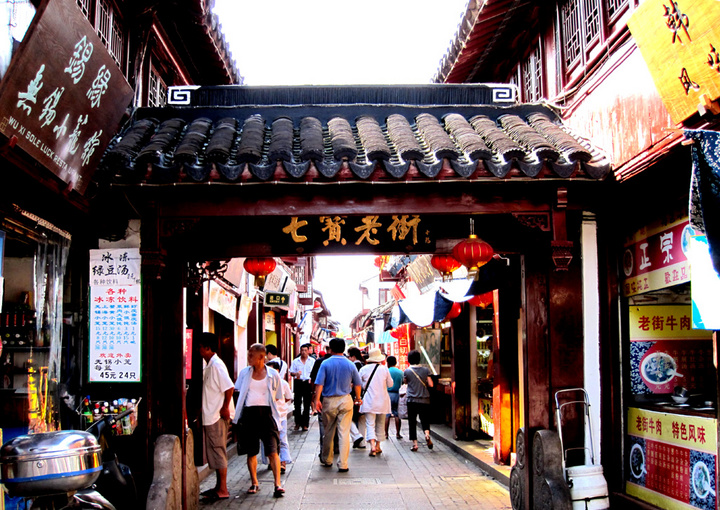
2. Qibao Temple & Pagoda
Qibao Temple, the spiritual and historical cornerstone of Qibao Ancient Town, was first constructed in 946 AD during the Northern Song Dynasty. Over the centuries, it has been destroyed by wars, fires, and floods, but each reconstruction has stayed true to its original architectural style, resulting in a complex that blends traditional Buddhist design with local Jiangnan influences.
The temple’s key features include:
Main Hall: The central hall, dedicated to Sakyamuni Buddha, houses a 3-meter-tall bronze statue of the Buddha flanked by statues of his disciples. The hall’s ceiling is adorned with intricate wooden carvings of dragons and phoenixes, symbolizing auspiciousness, while the walls are painted with murals depicting scenes from the Buddha’s life.
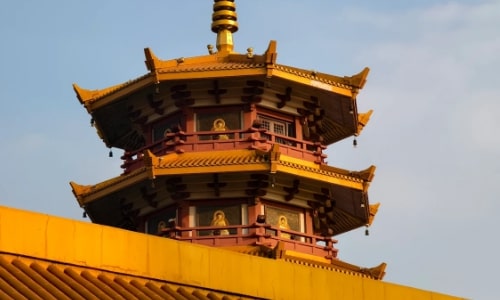
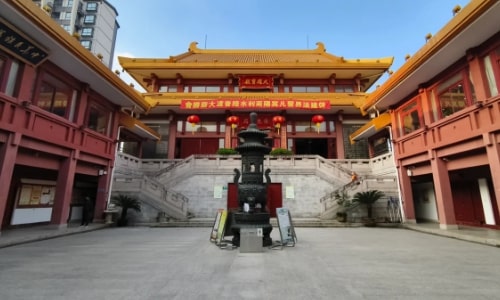
Bell Tower & Drum Tower: Located on either side of the Main Hall, these two towers date back to the Ming Dynasty. The Bell Tower houses a 2-ton bronze bell cast in 1621, whose chime can be heard throughout the town at dawn and dusk. The Drum Tower features a large wooden drum that is struck during religious ceremonies.
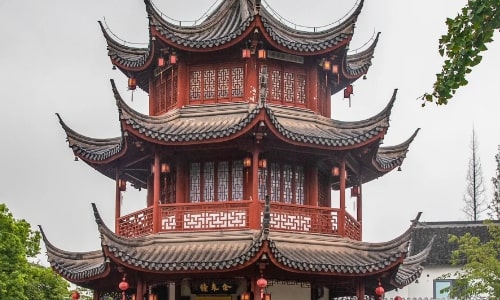
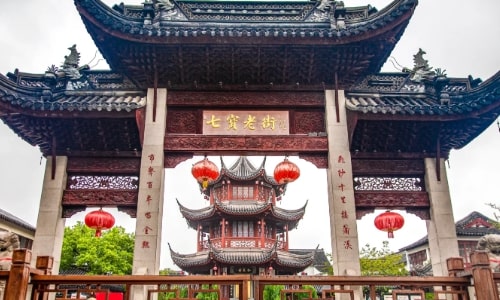
Pagoda: A small but elegant seven-story pagoda stands in the temple’s eastern courtyard. Though not open to the public, it is a prominent landmark visible from across the canal, with its delicate eaves and decorative carvings embodying the grace of traditional Chinese architecture.
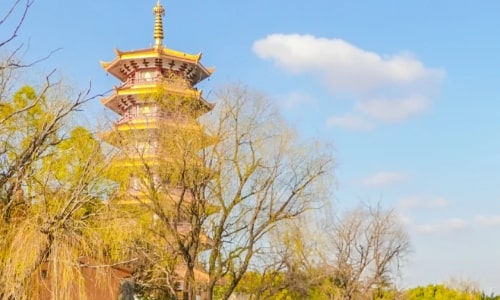
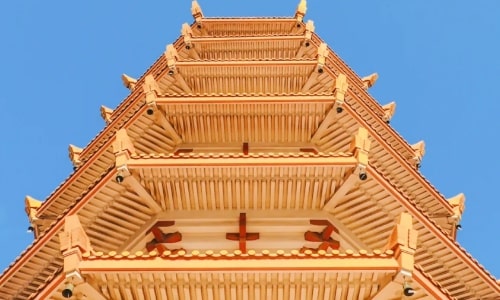
For visitors, the temple offers a peaceful retreat from the bustling old street. Many locals come here to burn incense and pray for good fortune, especially during festivals like Chinese New Year and the Mid-Autumn Festival. Culture lovers will appreciate the temple’s historical artifacts, including a collection of Buddhist scriptures from the Tang Dynasty, and the serene atmosphere that invites reflection.
3. Qibao Shadow Play & Folk Arts
Qibao Ancient Town is a vital guardian of China’s intangible cultural heritage, with shadow play and folk performances standing out as beloved attractions that bridge the past and present.
Shadow Play: This ancient art form, which dates back over 2,000 years, is brought to life in small theaters along qibao old street. Performers use intricately carved leather puppets—some as small as a hand, others over a meter tall—held against a translucent screen lit from behind. As they manipulate the puppets with thin rods, they tell classic Chinese tales like “Journey to the West” and “Legend of the White Snake,” accompanied by traditional music and narration in Shanghai dialect. The plays are dynamic and engaging, with puppets “flying” through the air, fighting battles, and even shedding tears (created using small drops of water on the screen). The museum is open Monday to Sunday from 9:00 AM to 5:00 PM, with shadow puppetry performances from 1:30 PM to 3:00 PM every Sunday.
Folk Performances: On weekends and holidays, the town’s central square transforms into a stage for traditional performances. Local troupes perform Huai Opera, a melodic form of folk opera popular in Jiangnan, with performers wearing colorful costumes and elaborate headdresses. Storytellers, known as “pingtan” artists, sit on a small stage with a pipa and erhu, weaving tales of love, heroism, and historical events with rhythmic dialogue and song. These performances are free to watch and attract crowds of locals and visitors alike.
These cultural acts make Qibao Ancient Town particularly appealing to families. Children are captivated by the moving shadow puppets and vibrant opera costumes, while parents and grandparents enjoy sharing these traditional arts with the younger generation.
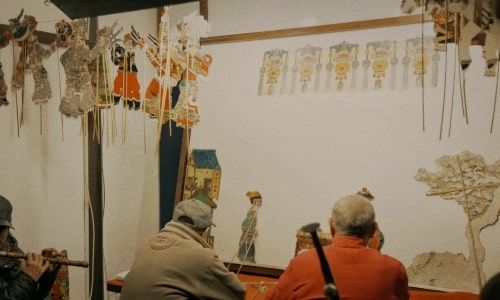
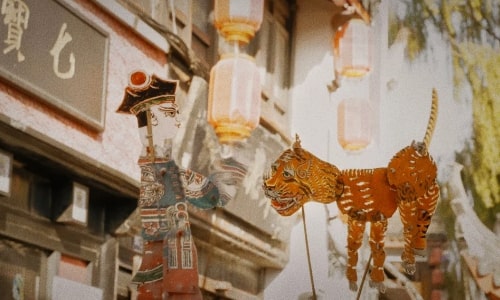
4. Qibao River & Stone Bridges
The Qibao River and its stone bridges are the defining features of Qibao Ancient Town, embodying the charm of a classic Jiangnan water town.
Canal Views: The Qibao River winds through the town for approximately 1 kilometer, its calm waters reflecting the red lanterns, willow trees, and shophouses that line its banks. For centuries, the canal was the town’s main transportation route, with boats carrying rice, silk, and other goods to and from the Grand Canal. Today, visitors can take a 20-minute boat ride on a wooden gondola-like vessel, piloted by locals who share stories about the town’s history as they glide past ancient bridges and historic buildings. The riverbanks are also ideal for leisurely walks, with stone paths shaded by willow trees and benches where you can sit and watch the world go by.
Stone Bridges: Over a dozen ancient stone bridges span the canal, each with its own unique history and design. The most famous is Fangsheng Bridge, a single-arch bridge built in 1571 during the Ming Dynasty. Measuring 40 meters long and 5 meters wide, it is the largest and oldest bridge in Qibao, with intricate carvings of lions and lotus flowers on its railings. Legend has it that releasing fish into the canal from this bridge brings good luck, and many locals still practice this tradition. Other notable bridges include Jiefang Bridge, a small stone bridge lined with potted flowers, and Yongxing Bridge, which offers panoramic views of the town’s skyline of tile roofs and pagodas.
Photography & Romance: At dusk, the canal comes alive with light as red lanterns strung along the banks and bridges are lit, casting warm, golden glows on the water. This creates a magical atmosphere that is perfect for photography—whether you’re capturing the reflection of a bridge in the canal or a couple walking hand-in-hand along the riverbank. Many couples choose to visit Qibao in the evening, enjoying a boat ride followed by a meal at a canal-side restaurant, making the area one of the town’s most romantic spots.
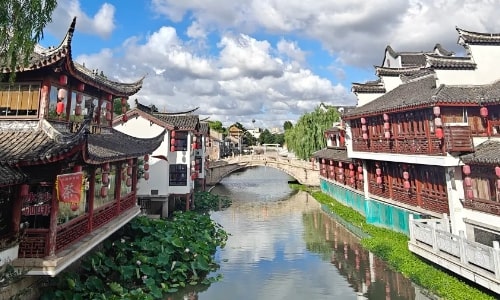
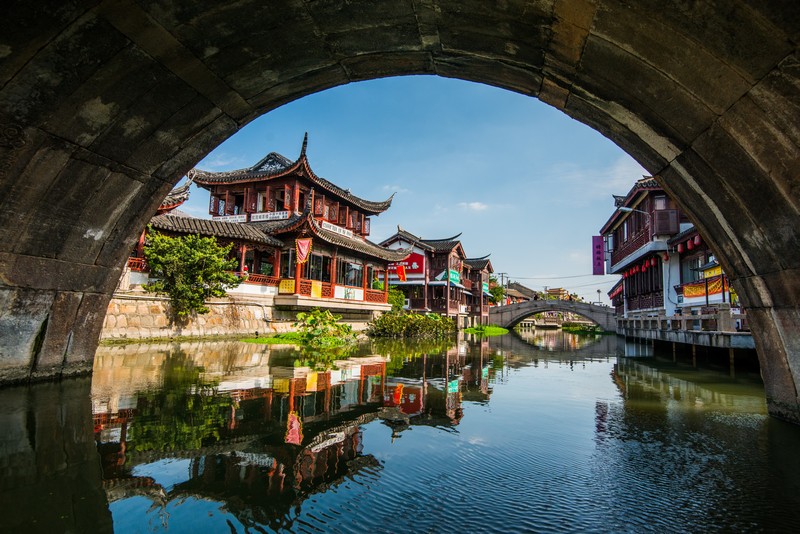
Local Snacks & Culinary Highlights
Qibao Ancient Town has earned a well-deserved reputation as “Shanghai’s snack paradise,” where the culinary scene is as much a part of the town’s identity as its temples and bridges. qibao old street food is designed for on-the-go enjoyment, encouraging visitors to embrace a “eat while wandering” philosophy that lets them savor the town’s flavors step by step.
Must-Try Snacks
1. Qibao Rice Cake (Qibao Fanggao): The most iconic snack in Qibao, this soft, glutinous rice cake is steamed in bamboo steamers and comes in both sweet and savory varieties. Sweet versions are filled with red bean paste, osmanthus honey, or black sesame paste, while savory options feature minced pork or dried shrimp. The rice cake has a delicate, chewy texture that melts in your mouth, and the fillings are made with fresh, local ingredients—osmanthus for the honey comes from trees along the canal, and red beans are sourced from nearby farms. Look for stalls with long lines of locals, as these are the ones serving the freshest cakes.
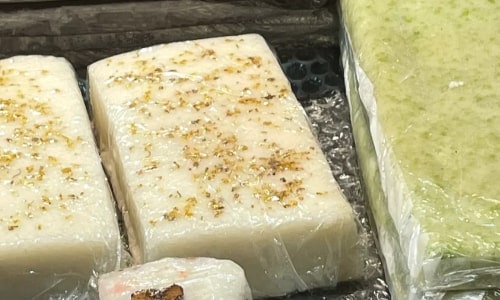
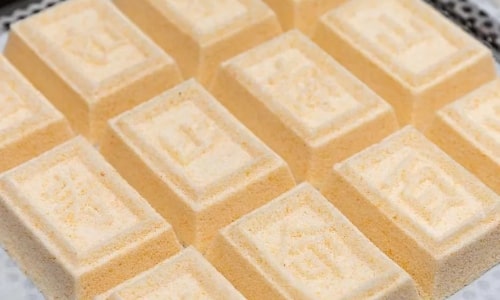
2. Stinky Tofu (Choudoufu): A divisive but beloved delicacy, Qibao’s stinky tofu is fermented for 72 hours using a secret brine made with bamboo shoots, mushrooms, and herbs, giving it a pungent aroma that is impossible to miss. The tofu is then cut into cubes and fried until the exterior is crispy, while the interior remains soft and silky. It is typically served with a spicy sauce made from chili oil, garlic, and soy sauce, or with pickled vegetables that balance the tofu’s strong flavor. For first-timers, it’s best to take a small bite—many people are surprised by how delicious it is once they get past the smell!
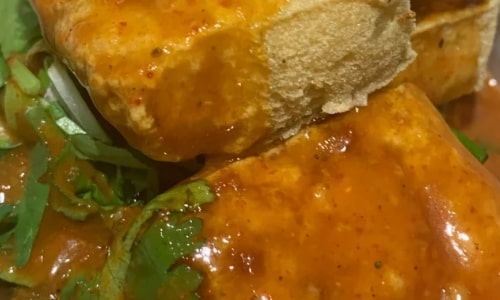
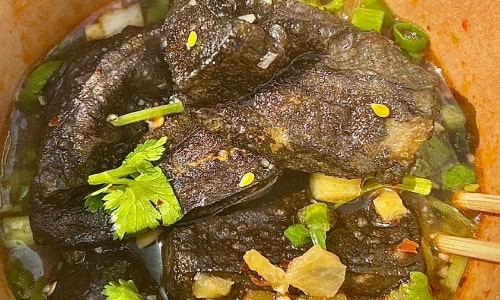
3. Sugar-Coated Haws (Tanghulu): A classic Chinese street snack that is particularly popular in Qibao, sugar-coated haws consist of crisp hawthorn berries skewered on a bamboo stick and dipped in a hot sugar syrup. The syrup hardens quickly, forming a thin, sweet crust that cracks when you bite into it, revealing the tart, juicy hawthorn inside. Some vendors offer variations with other fruits, like strawberries or grapes, but the traditional hawthorn version is a must-try. It’s the perfect snack for satisfying a sweet tooth on a walk through the old street.
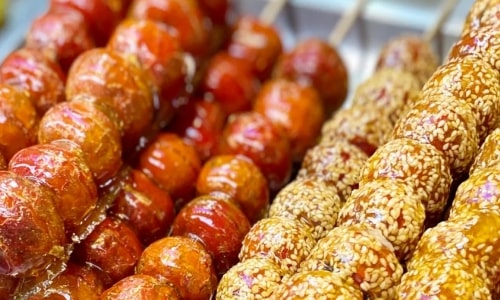
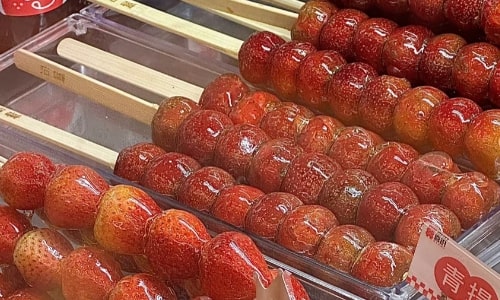
4. Crab Shell Pastry (Xiekehuang): Named for its shape, which resembles a crab shell, this flaky pastry is made with layers of butter and flour that are rolled out and folded multiple times to create a crispy texture. It comes in two fillings: sweet (red bean paste or lotus seed paste) and savory (minced pork with scallions or dried shrimp). The pastry is baked fresh throughout the day, and the aroma of butter and baking dough fills the air near the stalls that sell it. It’s best eaten warm, when the crust is at its crispest.
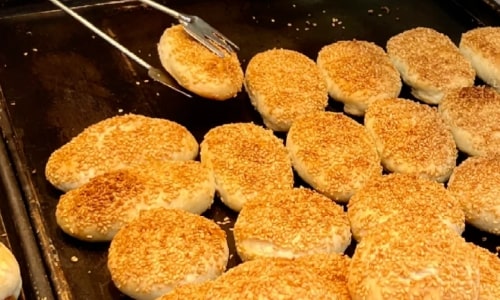
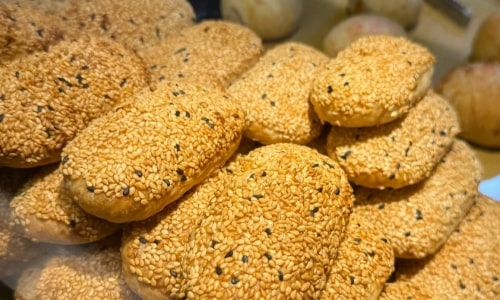
5. Rice Wine (Mijiu): A mild, sweet alcoholic beverage made from fermented glutinous rice, Qibao’s rice wine is a local specialty that has been produced here for centuries. It is served either warm or cold, and has a low alcohol content (around 5–8%), making it suitable for most visitors. Small stalls along the old street sell it in tiny ceramic cups, allowing you to sample it as you explore. For a more substantial experience, some restaurants serve rice wine with honey or osmanthus, enhancing its sweet flavor.
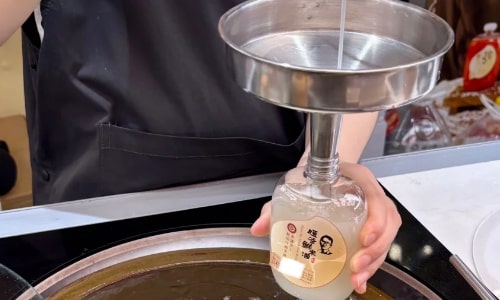
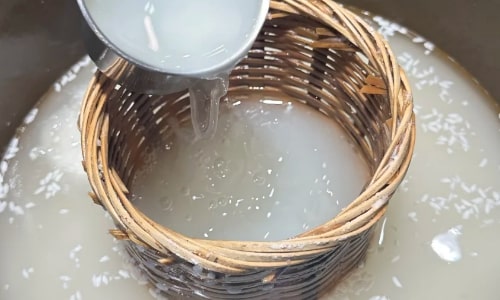
Eating Experience
The best way to enjoy Qibao Old Street food is to follow the lead of the locals. Start your day with a cup of warm rice wine and a savory rice cake from a morning stall. As you wander the old street, grab a skewer of sugar-coated haws for a sweet pick-me-up, then pause at a stool outside a stinky tofu stall to savor a few cubes with spicy sauce. For lunch, share a plate of crab shell pastries with friends or family, washing them down with more rice wine. The town’s compact size means you won’t have to walk far between snacks, and many stalls offer small portions, so you can sample multiple dishes without feeling overly full. Whether you’re a foodie or just looking to try something new, Qibao’s culinary scene offers a delicious journey through Shanghai’s local flavors.
Things to Do Beyond Sightseeing
While Qibao Ancient Town shines for its attractions and food, it also offers a wealth of activities that allow visitors to deepen their cultural immersion and create lasting memories.
Shopping: Handicrafts & Souvenirs
Shopping in Qibao is less about big brands and more about finding unique, handcrafted items that reflect the town’s heritage:
1. Traditional Crafts: Along Qibao Old Street, you’ll find small workshops where artisans create one-of-a-kind pieces. Wood carvers sell intricate sculptures of dragons, phoenixes, and Buddhist deities, while silk weavers offer delicate scarves and table runners embroidered with floral motifs. Paper cutters, who use scissors to create detailed designs of animals and landscapes, will even make custom pieces with your name in Chinese characters. These crafts make for meaningful souvenirs, as each one is made by hand and tells a story of Qibao’s artistic traditions.
2. Edible Souvenirs: For those who want to take Qibao’s flavors home, there are plenty of options. Packaged rice cakes, available in sweet and savory varieties, have a long shelf life and can be steamed or fried at home. Honey osmanthus syrup, made from the town’s fragrant osmanthus flowers, is perfect for adding to tea or desserts. Homemade chili oil, crafted with local chili peppers and Sichuan peppercorns, adds a spicy kick to any meal. Many of these edible souvenirs are sold in decorative tins or jars, making them ideal gifts for food-loving friends and family.
3. Antiques: Qibao is also home to several small antique shops that sell vintage trinkets from the Ming and Qing dynasties. You can find old coins, porcelain bowls with blue-and-white patterns, and wooden furniture like small stools and jewelry boxes. While some items are pricey, there are also affordable treasures like vintage postcards and old Shanghai matchboxes that offer a glimpse into the city’s past.
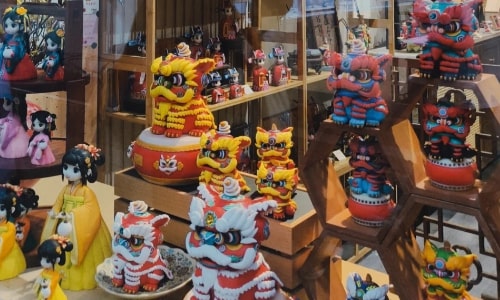
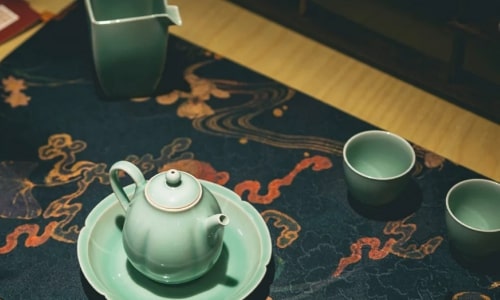
Cultural Workshops
For visitors who want to do more than just observe, Qibao offers a range of cultural workshops that let you hands-on experience traditional arts:
1. Calligraphy Classes: Several studios along the old street offer 30-minute introductory calligraphy sessions, taught by local artists who have practiced the art for decades. You’ll be provided with a brush, ink, and rice paper, and learn the basics of holding the brush and writing simple Chinese characters like “fu” (good fortune) and “ai” (love). The instructors are patient and explain the cultural significance of each character, making the class both educational and fun.
2. Sugar Painting: A favorite among children and adults alike, sugar painting workshops let you create your own edible art. Under the guidance of a master sugar painter, you’ll melt sugar in a small pot, then use a spoon to drizzle the liquid sugar onto a marble surface, creating shapes like dragons, rabbits, and flowers. Once the sugar cools and hardens, you can take your creation home (or eat it on the spot!). It’s a messy but delightful activity that gives you a new appreciation for the skill involved in this traditional craft.
3. Tea Tasting: Qibao’s tea houses offer more than just a cup of tea—many host tea ceremonies that teach visitors about Jiangnan’s tea culture. You’ll learn about different types of tea, such as Longjing (Dragon Well) and Biluochun, how to brew them properly, and the etiquette of serving tea. The ceremonies are accompanied by traditional music, and some include snacks like osmanthus cakes that complement the tea’s flavor. It’s a relaxing way to slow down and immerse yourself in the town’s peaceful atmosphere.
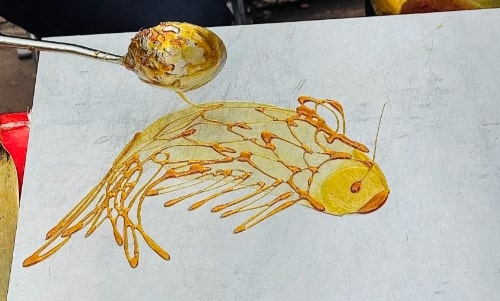
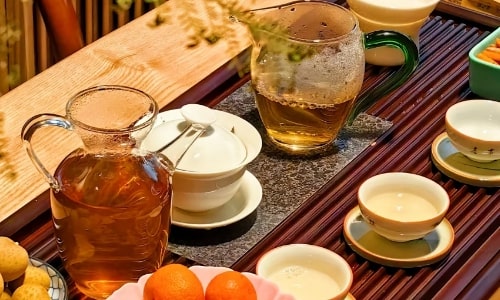
Festivals & Events
Qibao comes alive with color and activity during its annual festivals and events, which offer a unique glimpse into local traditions:
1. Lantern Festival (Yuanxiao Festival): Held on the 15th day of the Lunar New Year (usually in February), this festival celebrates the end of the Chinese New Year season. The town is adorned with thousands of colorful lanterns—some shaped like animals, others featuring intricate paintings—and locals and visitors gather to watch lantern displays and solve riddles written on lanterns. At night, people release sky lanterns into the air, making wishes as they float away. Shadow play performances and snack fairs take center stage, with vendors selling everything from sweet rice dumplings (yuanxiao) to fried dough sticks.
2. Qibao Temple Fair: Held twice a year—during Chinese New Year and in October—the temple fair is one of the town’s biggest events. The old street is transformed into a bustling marketplace, with stalls selling handicrafts, snacks, and traditional toys. Folk performances, including lion dances, dragon dances, and martial arts demonstrations, take place throughout the day. The highlight is the “God Parade,” where locals dress in costumes representing ancient gods and march through the streets, accompanied by music and firecrackers. The fair attracts crowds from across Shanghai, making it a lively celebration of local culture.
3. Osmanthus Festival (September–October): When the osmanthus trees that line Qibao’s streets and canal bloom in late autumn, the town is filled with a sweet, fragrant aroma. The Osmanthus Festival celebrates this seasonal delight, with vendors selling osmanthus cakes, osmanthus tea, and osmanthus wine. Cultural shows feature performances of traditional music and dance inspired by the flower, and visitors can participate in osmanthus-picking activities (in designated areas). It’s a peaceful, aromatic festival that captures the beauty of Qibao in autumn.
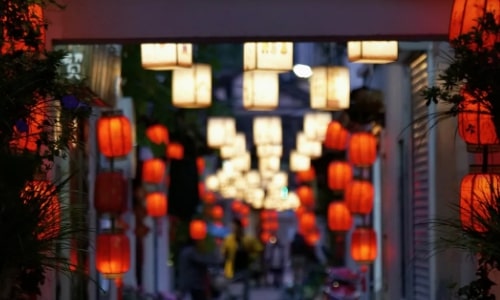
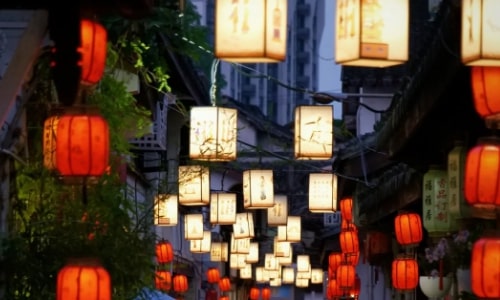
Practical Information
1. How to Get There
Qibao Ancient Town is one of Shanghai’s most accessible water towns, thanks to its direct metro connection, which makes it easy to reach from any part of the city.
The most convenient way to get there is by metro: Take Line 9 (which runs from Songjiang South Railway Station to Caolu) to Qibao Station. Once you arrive, exit via Exit 2 and follow the signs to Qibao Ancient Town—a short 5-minute walk along Qibao Road, which is lined with small shops and cafes. The metro ride takes approximately 20 minutes from People’s Square, one of Shanghai’s central hubs, and 30 minutes from Pudong International Airport (via a transfer from Line 2 to Line 9 at Century Avenue Station).
For those who prefer more flexible transport, taxis or ride-hailing apps like DiDi are also convenient. The ride from central Shanghai typically costs between ¥30 and ¥50, depending on traffic, and takes around 30 minutes. If you’re traveling with a group, this can be a cost-effective option.
For travelers wondering how to get to Qibao Ancient Town, the metro is highly recommended—it’s affordable (¥5–¥8 per person), reliable, and avoids the traffic congestion that can plague Shanghai’s roads during peak hours.
2. Best Time to Visit
The best time to visit Qibao Ancient Town is during spring (March–May) and autumn (September–November), when the weather is mild and pleasant. In spring, temperatures range from 15°C to 25°C, and the town’s willow trees and flowers are in bloom, adding a burst of color to the canal banks and old street. Autumn brings similar temperatures, with the added bonus of golden foliage that creates a warm, inviting atmosphere—perfect for walking, photography, and enjoying outdoor activities like boat rides.
To avoid crowds, it’s best to skip weekends and public holidays, such as Chinese New Year (January/February), National Day (October 1–7), and the Mid-Autumn Festival (September/October). During these times, the town can become extremely busy, with long lines at snack stalls and crowded bridges. Instead, visit on a weekday morning (between 9 AM and 11 AM) when the town is quiet, and you can explore at your own pace. Many locals visit in the morning to buy fresh snacks and groceries, so you’ll also get a more authentic taste of daily life.
The worst times to visit are summer (July–August) and winter (December–February). Summer in Shanghai is hot and humid, with temperatures often exceeding 30°C, making walking around the town uncomfortable. Winter is cold, with temperatures dropping to around 5°C, and the canal can be misty and gray. However, if you do visit in winter, the town’s festive decorations during December and January—including Christmas lights and Chinese New Year lanterns—add a cozy charm.
3. Opening Hours & Tickets
One of the great things about Qibao Ancient Town is that it is open 24 hours a day, 7 days a week, so you can visit at any time that suits your schedule. However, most shops, snack stalls, and attractions operate from 8:30 AM to 5:30 PM. If you want to experience the town’s culinary scene or visit its museums, it’s best to arrive during these hours.
While entry to the town itself is free, some attractions require tickets:
Qibao Temple: Free
Qibao Folk Culture Museum: ¥5 per person.
Shadow Play Performances: ¥5 per person for a 10-minute show.
A combined ticket for Qibao Temple and the Folk Culture Museum is available for ¥30, which offers good value if you plan to visit both.
The town is compact, so you don’t need a full day to explore it. Most visitors spend 2–4 hours in Qibao, which is enough time to walk the old street, sample snacks, visit a few attractions, and relax by the canal. It’s perfect for a half-day trip, and you can easily combine it with other nearby attractions, for a full-day itinerary.
Qibao vs. Other Water Towns near Shanghai
Shanghai is surrounded by several famous water towns, including Zhujiajiao, Zhouzhuang, and Tongli, each with its own unique charm. However, Qibao Ancient Town stands out from the crowd for one key reason: its unbeatable convenience.
Zhujiajiao, often called “Shanghai’s Back Garden,” is a popular alternative to Qibao. It is larger than Qibao, with more extensive canal systems and a wider range of attractions, including the Kezhi Garden (a classical Chinese garden) and the Zhujiajiao Museum. However, getting to Zhujiajiao is less convenient—it requires taking Metro Line 17 to Zhujiajiao Station, then transferring to a bus or taxi for a 15-minute ride to the town. The total journey time from central Shanghai is around 45 minutes, which is nearly double that of Qibao. Zhujiajiao also tends to be busier, with more tour groups, making it feel less intimate than Qibao.
Zhouzhuang and Tongli, located in neighboring Jiangsu Province, are among China’s most famous water towns, known for their well-preserved ancient architecture and scenic canal views. Zhouzhuang is often called the “Venice of the East” and is home to iconic bridges like the Shuangqiao (Twin Bridges). Tongli, meanwhile, is known for its “four gardens and one temple” and its slower pace of life. However, both towns are much further from Shanghai—they require a 1.5–2 hour journey by bus or train, making them better suited for overnight stays or full-day trips. They also attract large numbers of international tourists, which can make them feel more commercialized than Qibao.
When comparing Qibao Ancient Town vs Zhujiajiao (or other water towns), Qibao’s biggest advantage is its accessibility. Being directly reachable by metro means you can visit it on a whim—whether you have a free morning, a lunch break, or a few hours after work. It’s also more compact and intimate, with a “local” feel that is harder to find in larger, more touristy towns. For travelers short on time, families with young children, or anyone seeking a casual, low-key water town experience, Qibao is the clear choice. It lets you soak up the charm of a Jiangnan water town without the hassle of a long commute or the crowds of more famous destinations.
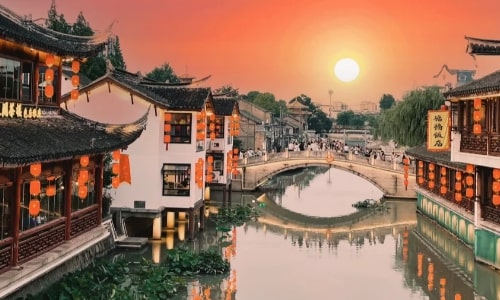
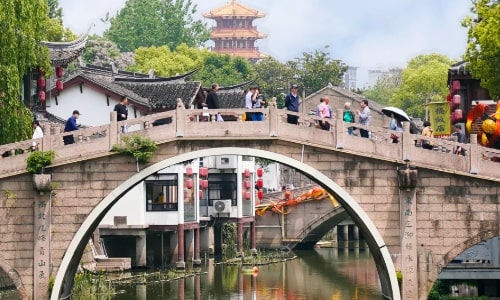
Travel Tips for Visitors
*Footwear: Wear comfortable, closed-toe shoes—qibao ancient town’s streets are paved with uneven stone slabs that can be slippery when wet, and you’ll do a lot of walking. Sneakers or walking shoes are ideal; avoid high heels or sandals with thin straps.
*Timing: As mentioned earlier, visit on a weekday morning for the most relaxed experience. Avoid the lunch rush (12–2 PM), when tour groups arrive and snack stalls get crowded. If you want to take photos without crowds, arrive at 8:30 AM when the shops first open—you’ll have the old street almost to yourself.
*Target Audience: Qibao caters to a wide range of visitors:
Families: Shadow play performances, sugar painting workshops, and kid-friendly snacks like sugar-coated haws make it perfect for children. The town is also stroller-friendly, with wide paths along the canal.
Seniors: The pace is slow, and there are plenty of benches by the canal and in tea houses where you can rest. Most attractions are at ground level, so there’s no need to climb stairs.
Couples: Dusk is the most romantic time to visit, with lantern-lit canals and quiet tea houses offering intimate spots to relax. Many couples also enjoy taking boat rides together.
Short-Term Travelers: If you only have 1–2 days in Shanghai, Qibao is a great way to experience local culture without sacrificing time.
*Etiquette: When visiting Qibao Temple, dress modestly—avoid shorts, tank tops, or revealing clothing. Speak quietly inside the temple, and follow the instructions of the monks or staff. When watching shadow play or folk performances, turn off your phone’s flash and avoid talking loudly during the show. If you want to take photos of local artisans at work, ask for their permission first—most are happy to agree, but it’s polite to check.
*Budget: Qibao is an affordable destination. Snacks cost between ¥5 and ¥15 each, and most attractions are cheap or free. A typical visit for one person—including snacks, a boat ride, and entry to Qibao Temple—will cost around ¥100–¥200. There’s no need to spend a lot of money to have a great time.
*Weather Preparation: Shanghai’s weather can be unpredictable, so pack accordingly. In spring and autumn, bring a light jacket or sweater for cool mornings and evenings. In summer, bring sunscreen, a hat, and a reusable water bottle—you’ll get thirsty walking around. In winter, bundle up with a warm coat, scarf, and gloves. It’s also a good idea to bring an umbrella, as rain is common year-round.
Conclusion: The Charm of Qibao Shanghai
Qibao Shanghai is more than just a tourist destination—it’s a living, breathing connection between Shanghai’s modern present and its ancient past. What makes it truly unique is the seamless blend of three core strengths: the thousand-year history that is visible in every stone bridge, every temple hall, and every old shophouse; the mouthwatering qibao old street food that defines the town’s daily rhythm, from the aroma of steamed rice cakes in the morning to the pungent scent of stinky tofu in the afternoon; and the unbeatable convenience of metro access that puts this heritage gem within easy reach of every traveler.
Unlike larger, more commercialized water towns, Qibao Ancient Town retains a genuine, local character. Here, you’ll see elders sitting on canal benches chatting in Shanghai dialect, vendors calling out to regular customers by name, and children chasing each other through the streets while clutching sugar paintings. It’s a place where traditions are not just displayed in museums but lived—where shadow play performers pass down their skills to apprentices, and rice cake makers use the same recipes their grandparents did.
Whether you’re a foodie chasing authentic flavors, a culture lover eager to explore history, or a traveler seeking a quiet escape from the city’s hustle and bustle, qibao ancient town delivers an experience that lingers in your memory long after you leave. It’s a reminder that beneath Shanghai’s modern exterior lies a rich, layered past—and that sometimes, the most precious treasures are the ones that are just a metro ride away.
For anyone wanting to understand the real soul of Shanghai, Qibao is not just a place to visit—it’s a must.
Tour Qibao Ancient Town with Your Way Holiday
We will provide a private & spacious car and a local professional tour guide with over 5 years guiding experience only work for you or your group. You will be escorted during your tour. Transport, ticket, and dining (At some local restaurants popular with locals) all we will arrange for you according your requirements. Please check our most popular Shanghai Tours including Qibao Ancient Town as below:
Are the above sample tour programs not suitable for you? We have more Shanghai tours. Our tours can be tailor-made based on your requirements and budget to create unique Shanghai experiences that allow you to interact with the local people and culture. Our enthusiastic tour expert will promptly reply you in details within 24 hours.
Prev: Shanghai Grand Theatre
Next: Longhua Temple
Duration:6-8 Hours
Attractions(Cities):Yuyuan Garden & Bazaar, Nanjing Lu (Nanjing Road), Jade Buddha Temple, Old French Concession
Tour Style:Incredible Shanghai Highlights Day Tour is a comprehensive Shanghai one day tour tailored for those who have just one day to experience the city’s top attractions. This fully guided tour offers the expertise of a knowledgeable Shanghai private tour guide, ensuring that you make the most of your limited time. As you explore Shanghai’s highlights, you’ll gain valuable insights into the city’s rich culture, history, local lifestyle, and future developments. With complete flexibility, you can either follow a pre-designed itinerary or customize your tour to suit your interests, allowing for a unique Shanghai experience tailored to your preferences. From iconic landmarks to hidden gems, this Shanghai one day tour provides a well-rounded view of the city, making it ideal for travelers seeking an immersive and efficient exploration. Whether you're interested in historical sites, modern marvels, or local culture, this tour ensures that you see the best of Shanghai in a single day.
Duration:10 - 12 hours
Attractions(Cities):The hangzhou Westlake(includingThree Ponds Mirroring the Moon), Guo Garden, Drangon Well Tea Plantation, Bamboo lined path at Yunqi, Hefang Street.
Tour Style:Embark on a memorable day trip to Hangzhou from Shanghai and immerse yourself in the natural beauty and rich culture of this iconic city. Your journey begins with a serene boat ride on West Lake, where you'll witness stunning views of the surrounding landscapes. Explore Guo's Villa, a tranquil garden showcasing traditional Chinese architecture and exquisite landscaping. In Meijiawu, enjoy the peaceful atmosphere of the tea village, learning about the world-famous Longjing tea. Visit Yunqi for a refreshing walk through the lush bamboo forests and peaceful streams. End your day with a stroll down Hefang Street, where you can experience local handicrafts, snacks, and historical charm.
Duration:9-10 hours
Attractions(Cities):Lingering Garden, Panmen Gate, Hanshan Temple, Shantang Street
Tour Style:Book this Shanghai to Suzhou day trip, part of our Suzhou Shanghai tour, and enjoy a seamless journey on a bullet train in less than 30 minutes. Accompanied by your private guide, you’ll explore Suzhou’s winding canals, historical buildings, ancient streets, and classic Chinese gardens. This private customized day tour offers a deep dive into Suzhou's rich heritage and picturesque landscapes. To enhance your experience, we will pre-book entrance tickets, allowing you to bypass the crowds and enjoy a hassle-free visit. This thoughtful arrangement ensures a comfortable and enjoyable day trip from Shanghai, blending convenience with an immersive exploration of Suzhou's traditional charm.
Duration:2 Days, 1 Night
Attractions(Cities):The Bund, Shanghai Tower, Nanjing Road, Old French Concession, Yuyuan Bazaar & Snack Street, Disneyland Park
Tour Style:This Shanghai vacation package is designed for families who want to ensure a memorable experience for everyone—both kids and parents—during their visit to Shanghai. Our Shanghai city tour features a young and dynamic private guide who engages with every family member, making the experience enjoyable and interactive. The tour is thoughtfully planned to include breaks for kids and covers a variety of exciting destinations. Highlights include a visit to Disneyland Park, where families can enjoy thrilling rides and entertainment. Explore the old Snack & Food Street for a taste of local flavors, and visit iconic landmarks such as the Bund, Shanghai Tower, and the Old French Concession. Each location has captivating stories and historical significance that appeal to both children and adults, ensuring an enriching and fun-filled journey through Shanghai. This Shanghai vacation package offers a well-rounded city tour that caters to the interests of all family members.
Duration:5 Days, 4 Nights
Attractions(Cities):Hangzhou: Westlake, Lingyin Temple, Leifeng Pagoda, Longjing Tea Village... Suzhou:Lingering Garden, Hanshan Temple, Tongli Water Town
Tour Style:"Above there is heaven, below are Suzhou and Hangzhou." This carefully designed 5-day Shanghai Suzhou Hangzhou tour offers a private, seamless way to explore these iconic cities from Shanghai. Breaking through language barriers with a knowledgeable guide and private vehicle, you’ll experience the beauty and tranquility of West Lake, admire the intricate designs of classical Chinese gardens, and gain insights into the unique history and culture of the region. This Shanghai Suzhou Hangzhou itinerary includes immersive experiences that bring you closer to the local people and traditions, enriching your appreciation of these timeless destinations. A truly memorable journey awaits, filled with breathtaking scenery and a deep dive into Chinese heritage!
Wechat: Chinaprivatetour
24 Hours Hotline:
+86 137-3541-1378
(Your Privacy is Protected)
1 to 1 tailor-made service from our professional travel advisors for the most sophisticated
Constantly excellent reviews for attraction, hotel and service Competitive price
Local experts provide quality tours Best selected knowledgeable local guides Authentic local restaurants
7*24 hours available to create you a worry-free tour. No Hidden Fees and absolutely no pressure to buy. Secured







